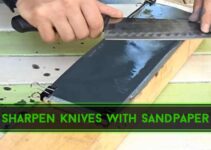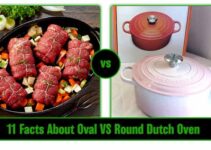In the world of cooking, there are a plethora of products that claim to make your life easier. Parchments and silicones are two such products.
parchment paper is often used for baking, however, silicone baking mats can be used for both baking and cooking.
Which one should you use? Let's discuss this more.
Parchment Paper
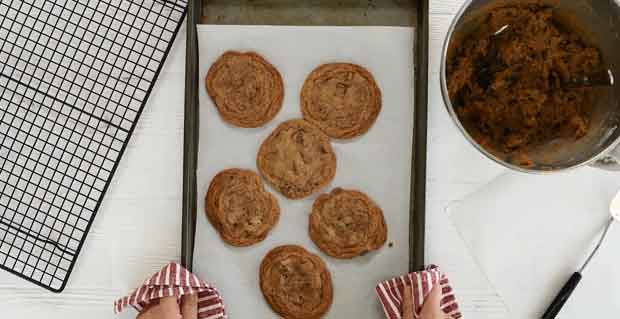
This is often used in baking, and some people use it for other things such as roasting vegetables. It can be reused several times, but it will eventually need to be replaced with a new piece of bakery paper.
It also makes cleanup very easy because you don't have to worry about foodstuffs sticking to the pan or your kitchen range becoming stained from cooking grease.
Silicone Mat
Silicone baking mats are made of silicone, so they're flexible and durable enough that you can reuse them many times without wearing down the material. You just need to wash them off after each use (they come clean easily).
Silicone baking mats are reusable baking mats that can be used for both cooking and baking. They last longer than baking paper, but they can still be stained or burned if they are used too often.
You should never put these in an extreme heat source like microwaves or on top of direct flames. This might lead to them melting.
Parchment Paper vs Silicone Mat Specific Details:
Thickness
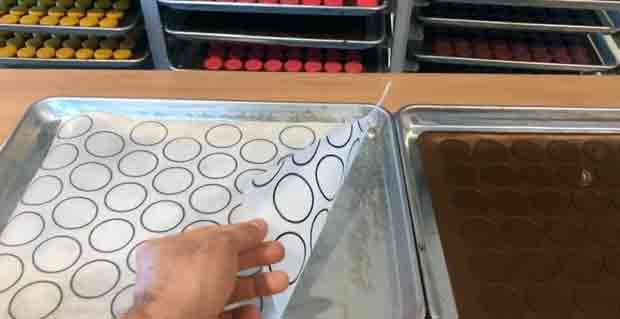
Parchment paper is reused in baking, so it's thinner and more prone to breaking. The baking paper also requires being doubled up when used for a long time period because the heat will eventually wear down the material.
A silicone baking sheet can take much higher temperatures than bakery paper without burning or melting as easily. They are thicker, so you don't need to double them up like you would with bakery paper. They're also usually non stick, which is another benefit.
These work best on surfaces such as glassware (no sticking) and metal pans (easy release). It won't stick at all if heated slowly enough, and the material is silicone, which means it will not burn or melt easily.
Cleaning
Parchment is easier to clean if you have a PAM oil spray, but even without the PAM it's much more forgiving and doesn't stain as easily.
Silicones are less prone to stains, but they need some sort of release agent when using them for baking (such as flour or butter) or they can get sticky. Parchment is also less prone to getting stuck when used for baking.
Chemical Content
Parchment contains chemicals that are known carcinogens, but these substances only exist in the material as long as it's been exposed to air and heat from either a microwave or oven (usually).
This means you should not use bakery paper over a direct flame without covering your mat with aluminum foil first.
Silicones contain no hazardous materials at all, which makes them safer for young children who may be more likely to put things into their mouths if left unattended.
Type of Foods
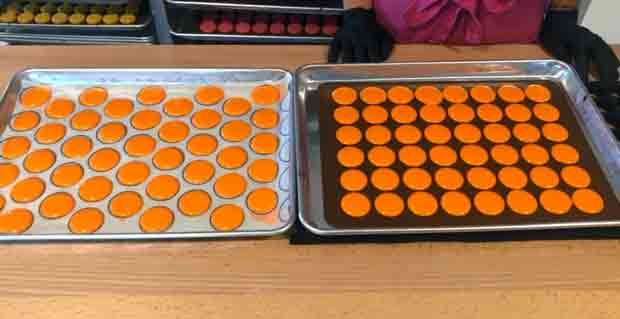
Parchment is best for baking foods that need to be turned over in the oven, such as cakes.
Silicones are suitable substitutes if you have an aluminum foil pan because they will not get stuck like parchment most likely would. These mats work well if your foodstuffs needs sauce and spices applied before being placed on them.
They're also excellent choices when making dishes that require turning during the process (such as omelets). Parchment doesn't provide traction, so eggs may slide around more than desired while trying to turn them.
Eco Friendly
Parchment is not eco-friendly. It is more of a throwaway product that can be used for several dishes, but it's also very wasteful and contains hazardous chemicals because they resist grease or water from spills.
Silicones are eco-friendly since silicone does not contain any dangerous materials like the ink on parchment which contains known carcinogens (although these substances only exist as long as the material has been exposed to air).
Foods cooked on parchment might have less contact with meal products than when baking foods on silicon Matts, meaning there will be fewer oils or fats leaching into your meal. This might make them healthier choices if you want to avoid toxins and other unhealthy additives present in some meal products.
Silicone mats can also be recycled, but parchment cannot. Parchment is made from wood pulp and chemical additives that are not recyclable.
Some FAQs About Parchment vs. Silicone
1. Is Parchment Paper Dangerous?
Parchment is not considered dangerous. Parchment paper has been used by professional bakers for decades because it's disposable and cheaper than silicone baking mats, which are more expensive to use long term, yet they provide a few advantages over Parchment Paper.
2. Can I Roast Vegetables on a Silicone Baking Mat?
You can, although parchment may be preferable if you're using the mat for delicate handling. Parchment is also less likely to burn or melt easily while roasting vegetables on a silicone baking mat.
3. Can Parchment Paper Go in the Oven at 450?
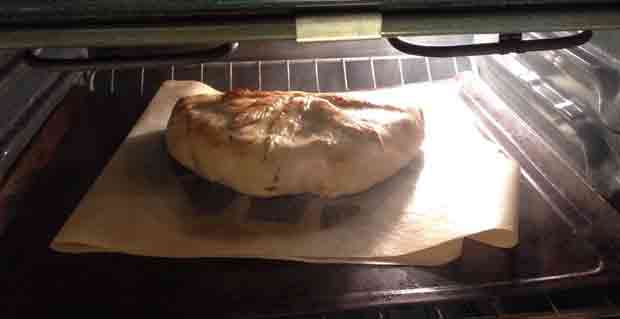
Yes, but it may burn quickly. It is an excellent choice for baking at lower temperatures because they can't go up past 450 degrees Fahrenheit or else the heat will cause them to burst into flames.
4. Can I use a Silicone Mat Instead of Parchment Paper?
Yes, you can use a silicone mat instead of bakery paper, though there is no one right way to do it, and you'll need to experiment with various instructions according to the foodstuffs that you're baking as well as how long they need to cook for.
Silicone mats are made from a flexible material which makes them better suited for delicate handling of foods like omelets or eggs when trying to turn them over in a pan, while Bakery paper cannot be used at all due to its lack of flexibility.
Parchment Paper may also have more contact with your food because many people prefer this type since it's cheaper than Silicone Matts but provides less traction.
5. Is Parchment Paper the Same as Silicone Paper?
No. Some people may refer to using Parchment Paper as silicone paper, but they are not the same thing.
In order to make the paper, a wood pulp along with chemical additives is used. As opposed to those, Silicone Matts can be recycled with the right detergent after careful handling.
When you wash them in warm water and allow it to air dry outside after each time. You cook there to avoid any food particles getting stuck inside the pores of the mat, which might cause bacteria or mold growth.
6. Are Silicone Baking Mats Safe?
Silicone Matts are safe, but you should always take care of them so that they last and don't get ruined.
If the mat is left dirty after baking, it can create a breeding ground for bacteria, which could lead to food borne illness. It's important not to use a silicone baking mat if it has any cracks or breaks because these can cause dangerous leaks when used over high heating like pizza ovens.
7. How Long Does Silicone Baking Mat Last?
Silicone baking mats can last for a long time if they're taken care of properly. Usually, silicone mats will need to be replaced every two years because food particles and bacteria may accumulate on them, leading to mold or mildew coming from the pores in the matting material.
9. How do You Store Silicone Baking Mat?
Place them somewhere like your oven, where they will have plenty of airflow until completely dry before storing away from sunlight or other sources of heat. You should try to store food grade silicone mats separate from cookery utensils or dishes as well, since these items may contain grease, which would ruin the mat.
9. How do You Store Parchment Paper?
Store parchment paper in a cool, dark place where they will be free from sunlight or other sources of heat. Parchment paper can last for decades if stored properly and unopened until the next time it's needed.
Additional Tips
The best choice of mat will depend on what your needs are, as well as how often you want to use it and whether there's a concern about chemicals leaching into food while baking.
Parchment paper may be better if you only need one sheet occasionally, whereas silicone mats may be more cost efficient since they can last much longer (especially with careful care).
Silicone mats are also less prone to sticking during baking because of their flexibility. This makes them ideal for brownies that require delicate handling. Parchment paper might work better when using cookie cutters because it won't stick to dough like silicon does, which could make things more difficult.
Parchment paper is often used for lining cake pans and baking sheets because they don't stick to the pan like silicon does, which can cause problems when removing baked goods from their surface.
Last Thoughts
When considering choosing one, it's important to consider your kitchen needs. Use Parchment for a variety of cookery methods and is great for high heat baking.
Silicone mats are thinner than parchment, so they're easier to store or carry around in the oven.
We recommend using parchment paper for baking because it is more environmentally friendly and doesn't have any harmful chemicals used in the manufacturing process.
If you are looking to buy a silicone mat, we would suggest one that has been manufactured with food grade materials so you know your product won’t be toxic or leech into your baked goods.

